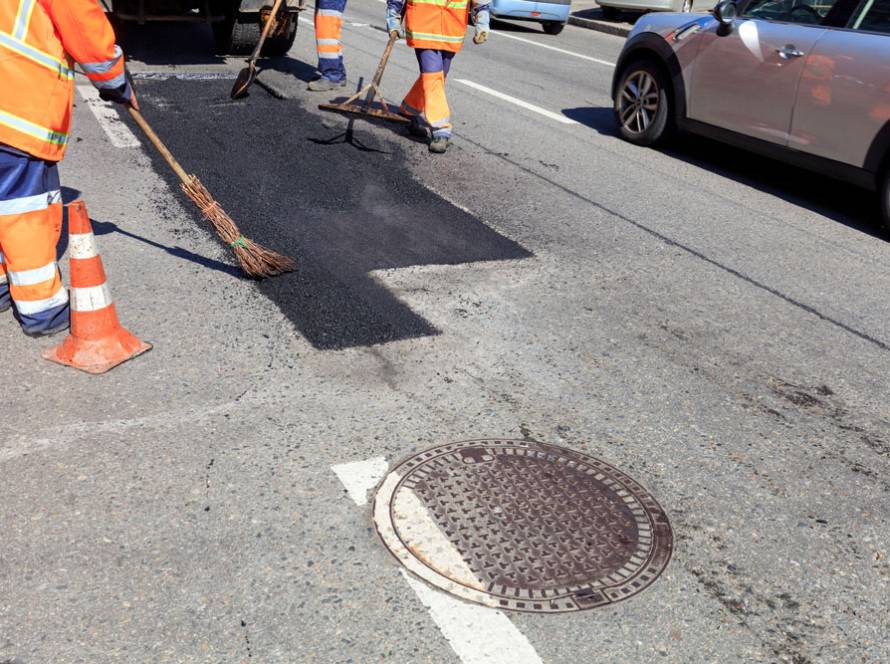When you drive over a road that feels perfectly even, quiet, and stable — that smoothness isn’t an accident. It’s the result of engineering precision, expert material selection, and careful workmanship.
A perfectly surfaced road doesn’t just look great — it improves safety, enhances fuel efficiency, and extends the lifespan of the surface. In this article, we’ll break down what makes a road surface truly “smooth,” how professionals achieve it, and why it matters for every type of project.
1. What “Smooth” Really Means
Smoothness isn’t just about appearance — it’s about performance. A high-quality surface has:
- Evenness: No dips, bumps, or surface waves.
- Correct texture: Enough grip for tyres while maintaining a comfortable ride.
- Good drainage: Proper slope and structure to prevent standing water.
- Durability: Resistance to cracking, rutting, or premature wear.
A smooth road surface gives drivers better control, reduces noise, and lowers maintenance costs over time.
2. Building the Foundation: Preparation Is Everything
Every long-lasting, smooth road starts beneath the surface. The base and sub-base layers are carefully prepared to create a stable, well-drained foundation.
- If the ground isn’t compacted correctly, the surface will soon crack or deform.
- Engineers ensure the sub-base can handle the expected load — whether it’s light residential traffic or heavy commercial vehicles.
- Proper drainage systems are integrated to keep moisture away from the structure.
Without this foundation, even the best asphalt will eventually fail.
3. The Role of Machine Lay Precision
For a truly consistent finish, machine laying is essential. Hand-laying can work for small patches, but machine-laid tarmac ensures even thickness, smoother transitions, and better compaction across larger areas.
At Total Surfacing, our Machine Lay Tarmac service uses modern paving equipment to deliver flawless results for both residential and commercial projects. The controlled process guarantees the right temperature, uniform density, and precise surface levels — key ingredients for lasting smoothness.
4. The Science Behind Compaction and Texture
Compaction is the stage that locks the surface together. Rollers compress the asphalt mix while it’s still hot, bonding aggregates tightly and eliminating air voids.
- Proper compaction: Maximises strength and prevents premature cracking.
- Temperature control: The asphalt must be compacted before it cools below optimal range.
- Texture finishing: The final layer determines grip and water flow, creating a safe and comfortable surface.
This combination of timing, technique, and technology defines the difference between a short-lived surface and a road built to endure.
5. Finishing, Edges, and Quality Checks
After laying and compaction, the finishing process ensures the road performs well in real-world conditions.
- Joints and edges are sealed to prevent water penetration.
- Transitions between new and existing surfaces are smoothed for consistency.
- Quality checks confirm evenness, texture, and drainage.
These small finishing touches ensure the road not only looks clean and professional, but also resists wear and weather for years.
6. Commercial vs Residential Surfacing
Smoothness standards differ depending on the application:
- Residential surfacing focuses on aesthetics, safety, and comfort.
- Commercial or road surfacing demands higher load capacity and durability for heavy vehicles and high traffic.
For larger-scale works like car parks, forecourts, and access roads, our Commercial Surfacing & Road Surfacing service provides the strength and precision required for long-term performance.
7. Why Smooth Roads Matter
A well-surfaced road delivers lasting value:
- Improved safety: Fewer skid risks and better grip.
- Lower maintenance costs: Surfaces last longer with fewer repairs.
- Enhanced appearance: A professional finish reflects well on any property or business.
- Better performance: Vehicles experience less wear and reduced fuel use.
Smooth roads aren’t just about looks — they’re about quality, efficiency, and long-term savings.
Conclusion
Achieving a perfectly surfaced road is both an art and a science. It takes skilled preparation, precise machinery, and professional quality control to get it right.
Whether you’re resurfacing a private driveway, a car park, or a major access road, the key to long-lasting smoothness lies in expert execution and attention to detail.


